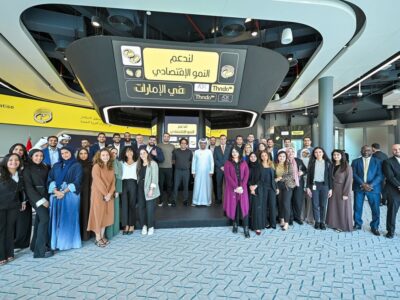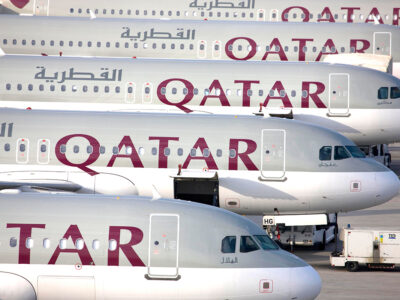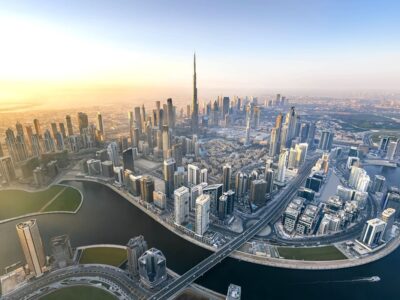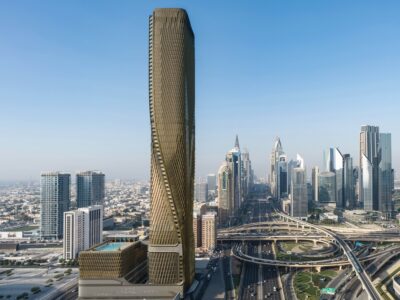The ‘Mecca of Architecture’ that is Dubai seems to be at the forefront in terms of the development of new, fascinating glass boxes. Saddled with one third of the world’s construction cranes, the building frenzy has engulfed the entire region.
Attracting new developments like ‘World’s biggest airport’,’ World’s tallest structure’, amusement parks and shopping malls, the message is clear: If you dream about it, Dubai has an answer for it.
While the rest of world seems stagnant in terms of the birth of new buildings, Dubai continues to announce new projects which strike awe and stimulate the imaginations of people across the globe.
Dubai has become the new global icon of engineered urbanism—complete with its Western lifestyle, sandy beaches, a property-rights regime, sleazy cars and waterfront properties.
Dubai has become the new global icon of engineered urbanism-complete with its Western lifestyle, sandy beaches, property-rights regime, sleazy cars and waterfront properties.
In contemporary Dubai, local Emiratis form a minority, consisting of only around 8-20% percent of the population. On the other hand, Dubai is inundated with European, Lebanese and Indian professionals working white collar jobs.
The city is filled with vast numbers of Sri Lankan, Filipina and Indian maids while much of the building explosion is carried on the shoulders of a crowd of poorly-paid Pakistani and Indian men who work 6.5 days per week in 12-hour shifts-all amidst the crippling desert heat.
But, the million-dollar question in many of our minds is: How much of this development benefits the common person? Has the city’s architecture evolved and responded to the needs and aspirations of the masses? Is it socially responsive? We can start by defining precisely what constitutes a socially responsive environment.
Socially responsive architecture evolves as a direct reflection of the life patterns of its inhabitants, reflecting the collective will of the society. Architecture should employ sustainable design to address client goals and user needs while responding to the surrounding community.
Architecture that serves a community; addresses inequities in society; and responds to climatic, cultural and environmental conditions can be considered socially responsive.
Socially responsible design goes beyond aesthetics and function-it emphasises interaction between structure and people. For example, 20 to 30 years ago, bus stops were simply steel poles planted at certain points in a sidewalk.
Socially responsive design helped architects create glass-and-steel bus shelters that allow visibility but protect users from wind and rain.
Dubai is inhabited by people from diverse cultures with different needs. Over the last two decades, massive social and demographic changes have occurred.
In post-9/11 Dubai, a lot of money has been pumped in from Middle Eastern investors who-fearing backlash or repercussions-have pulled up stakes in the West. In fact, investors from Saudi Arabia alone are believed to have invested at least US $7 billion into Dubai’s sand castles.The result has been a period of rapid development which is unprecedented and unparalleled in modern architectural history.
There is a bizarre fascination with designing and building evermore glamorous and mesmerising projects, and-despite the credit crunch-money for those kinds of projects seems to be in abundance.
It’s interesting to note that, of the 160 tallest completed or approved buildings in Dubai, only three were completed before 2000; And, of those three, just two were completed in 1999.
This advancement has had multiple effects on the built environment here. The influx of foreign cash has led to more jobs and new project launches continuously to keep up with the growing population.
To address the growing demand for dwelling space, multi-storey flats have been proposed as a potential solution. Somehow, despite myriad claims made by planners and developers, a lot of these developments fail to address the physical and social requirements of the huge expat population that reside there.
Densification has also led to the disappearance of open green spaces and community parks; empty spaces of land are, all too often, grabbed up by greedy developers looking to build on every inch of land available.
Moreover, there has been a complete failure to provide affordable housing, which obviously, is leading to large-scale emigration of families of the lower income strata.
Throughout the city, high rise buildings-which tend to be climatically and culturally unsuitable for inhabitants-are on every corner. To make matters worse, every developer feels the need to come up with a new building, which offers more high-tech amenities and is just a few floors higher than the previous one announced.
How many of these buildings cater to the lifestyle of the people living in them? The expat population in Dubai is searching for spaces where they can interact with their friends and families, unhindered by rising levels of traffic.
Dubai’s new developments fail to address these simple problems. Living in glass boxes or tucked away in enclosed apartments sees children yearning to be outside.
Children need outdoor play for their physical and mental development and high rise glass boxes fail to seriously provide any such spaces.
The Dubai government seems completely obsessed with creating a utopian dream. Indeed, the coastal desert has become a huge game of Lego in which developers are invited to build high-tech clusters, create ‘cities within cities’ and manmade islands in the sea.
What percentage of the population residing in Dubai can afford to rent a flat in Dubai Marina or on one of the fronds of Palm Jumeirah?Inhabitants of the city would love to work near their homes and have day cares, community centres and schools located nearby. Unfortunately, a significant percentage of the people working in Dubai are forced to live in far-off emirates due to more affordable living options.
But, the real price they pay is the hours spent queuing in traffic, away from their homes and families.
Architecture should reflect the lives of the people who live in the buildings and celebrate the materials with which it is built. In Dubai, however, most architecture doesn’t reflect the climate in which it is built; it doesn’t utilise local materials; and it is often disconnected from the normal life of expats.
A long-standing contradiction is the massive glass windows and curtain walls that-for their aesthetic appeal-dominate the skyline.
However, those glass panes that allow for natural light, also allow for added heat, which requires a significant amount of air-conditioning (i.e. energy consumption) to keep cool.
From the very beginning, high-rises have proven to be totally unsuitable for housing families-too many people are crowded into too little space, and the world outside becomes something that is almost inaccessible.
Most sociologists agree that high rise buildings are unsuitable for families with children. It pushes its occupants into a highly-compartmentalised, beehive type of community for which most people with families have little desire and even less aptitude.
Unfortunately, here in Dubai, high-rise housing is a product of the architectural trends of the era. Architects love to build high buildings because that’s what impresses other architects. No one sits up and takes notice of little rows of houses and small communities.
Architecture cannot alleviate all the social and physical woes of the communities living here, but there should be a willingness to seek solutions for the community in its own context.
As architects, we still we have the obligation to participate in the social, environmental realities that our communities experience. The architect’s emotional connection should always be with place-not just the superficial qualities of place-and his/her ethical responsibility to shape up the environment.
In traditional cities throughout the mountains and deserts, there is very little ‘technology’ available, but homes are built and families flourish.
In modern architecture, hardly anything is done by local people; hardly anything can boast a ‘local’ touch. Only if we understand the diverse needs of the people living in Dubai, can we make a significant contribution to its communities. Socially responsible design is no longer an option, it is a necessity.
Its pursuit is not only a service to the industry, but a service to the community in which it stands.
Not practicing these days, her four year-old requires all the attention she can give. But the quest for knowledge and conquering new avenues continues as she juggles her time between writing, being a stay at home mum, an interior design student and a computer geek.







